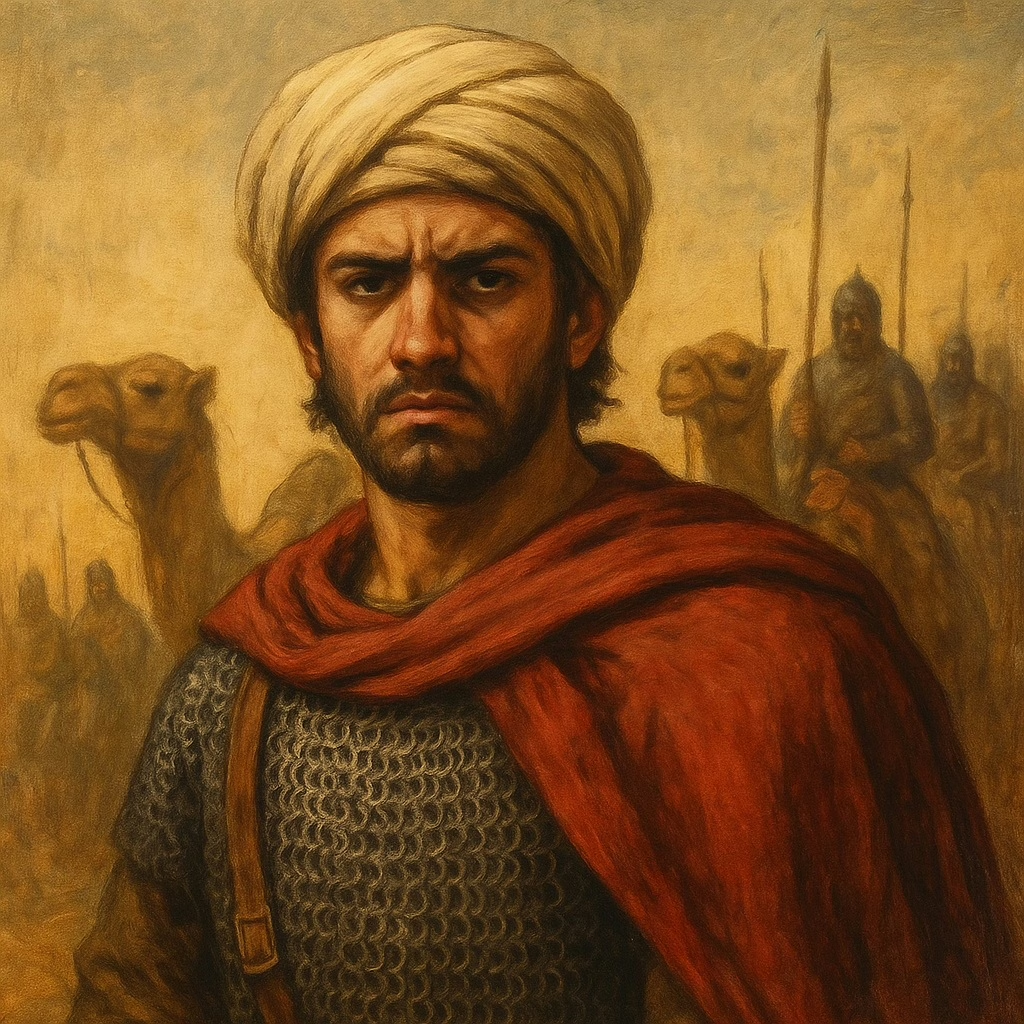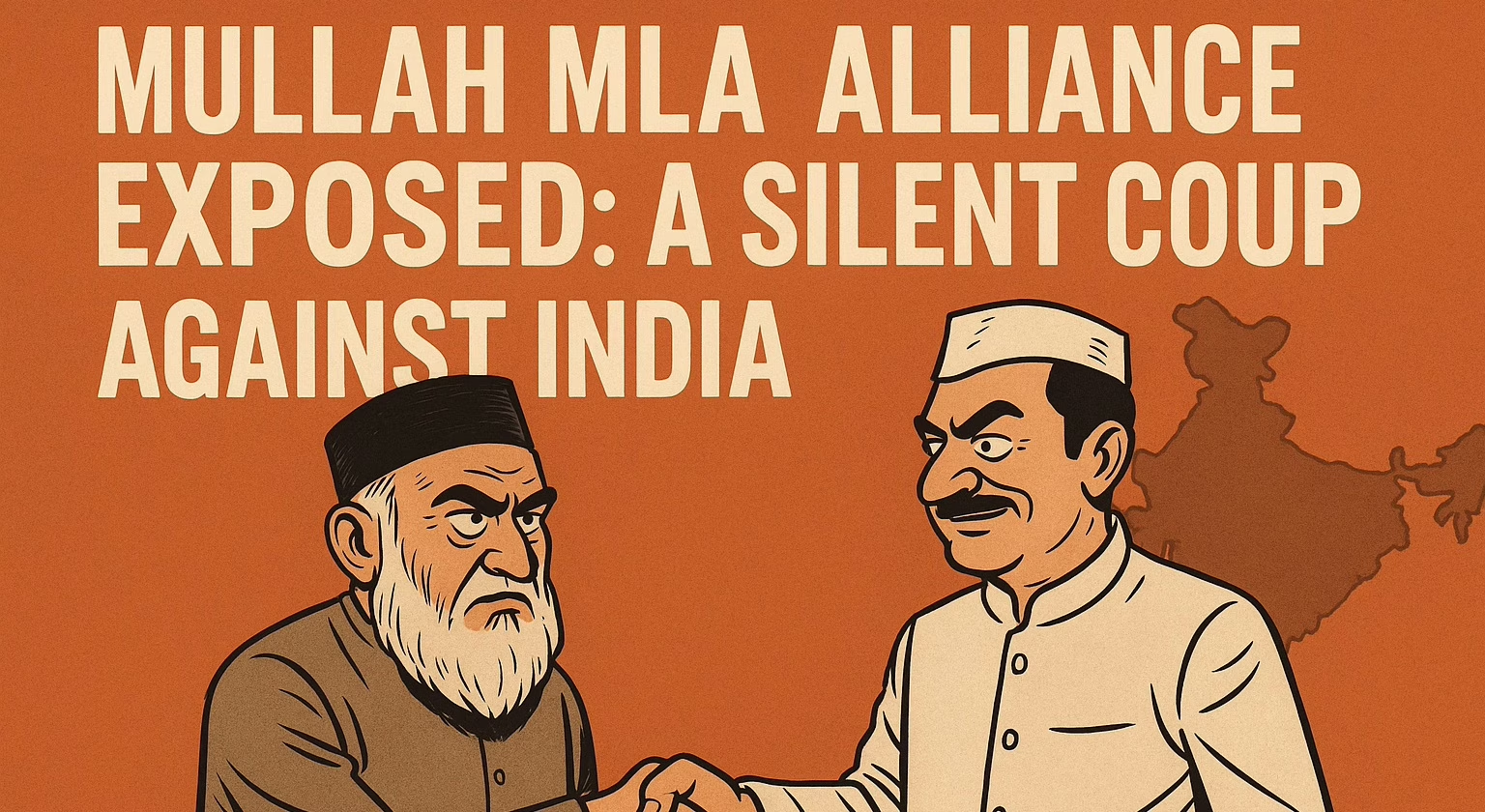Introduction: What Really Happened in 712 CE?
You’ve heard of Alexander. You’ve heard of Genghis. But you’ve probably heard the cleanest version of Muhammad bin Qasim—the so-called “conqueror of Sindh.”
Especially if you’re reading a Pakistani schoolbook, where Qasim is described as a just, noble administrator who brought Islam to India peacefully. According to them, he was a teenage general with a golden sword, a Quran in hand, and human rights on speed dial.
Sorry to break it to you: that’s not history. That’s PR.
The First Muslim Invasion of India wasn’t noble, and it definitely wasn’t peaceful. It was brutal, bloody, and filled with betrayal, fanaticism, rape, slavery, and slaughter—led by a teenage warlord who acted more like a mafia pawn than a messiah.
Let’s bust five big myths.
🐫 1. Muhammad bin Qasim Wasn’t a Hero—He Was a Fanatic Enforcer
Let’s start with the real deal: Qasim wasn’t a liberator. He was a state-sponsored mercenary sent by the infamous al-Hajjaj, governor of Iraq—a man known for his cruelty, tyranny, and fixation on religious conquest.
Qasim was just 17. But unlike what you’ll find in Class 8 Pakistani history textbooks (where he’s hailed as the “first Muslim ruler of the subcontinent” who treated Hindus kindly), his actual methods were straight from the ISIS playbook:
- Massacres of civilians in Debal, Raor, Brahmanabad, and Multan.
- Temples razed, idols smashed, and priests slaughtered.
- Women and children enslaved by the thousands and shipped off as war booty.
- Repeated episodes of rape and sexual enslavement, including of Raja Dahir’s daughters—sent as a “gift” to the Caliph.
According to primary sources like Chachnama and Al-Biladhuri’s Futuh al-Buldan, Qasim didn’t just conquer—he burned, raped, taxed, and enslaved.
And guess what? After all that savagery, his own Caliph killed him—not because he was too cruel, but because he got too powerful.
⚔️ 2. The First Muslim Invasion of India Was Fueled by Greed—Not Justice
One of the most repeated myths is that the First Muslim Invasion of India was a righteous retaliation. The story goes like this: pirates from Sindh captured Arab ships carrying Muslim women and children. Al-Hajjaj, the governor of Iraq, demanded justice. Raja Dahir refused. War followed.
Sounds straightforward—until you read the actual history.
Here’s what really happened:
- Pirates operating near Debal (not directly under Dahir’s control) attacked Arab merchant ships.
- These pirates were independent coastal raiders, known as Meds, and did not report to the Raja.
- When al-Hajjaj demanded action, Raja Dahir replied with diplomatic honesty: “They are not under me, nor do they belong to me. I have no power over them.”
That’s not a refusal. That’s a fact.
Dahir didn’t protect the pirates. He simply lacked the authority to hand them over. But Al-Hajjaj, eager for conquest and revenge, spun it as defiance.
Thus, an honest reply was weaponized into a justification for bloodshed.
Behind the veil of moral outrage, the real motive was greed. Sindh’s temples overflowed with gold, its ports buzzed with trade, and its borders were soft. For Al-Hajjaj, this was less about kidnapped women—and more about seizing a strategic goldmine.
🕍 3. Qasim Turned Temples into Mosques and Markets
Pakistani textbooks love to claim that Qasim was “tolerant” of Hindu religion. Let’s fact-check that.
At Debal, Qasim’s troops used giant catapults to destroy the main temple. When they breached the walls, they slaughtered the priests, massacred civilians, and turned the site into a military garrison.
In Multan, they didn’t destroy the famous Aditya Sun Temple immediately—because it generated insane revenue. So instead, they taxed the pilgrims, seized the income, and later turned the temple into a Jami Masjid after slaughtering the Brahmin priests.
Let that sink in: they didn’t protect the temples—they profited off them before converting them into centers of occupation.
According to Futuh al-Buldan, Multan was nicknamed “the House of Gold”—because that’s how much Qasim plundered.
🤯 4. The First Muslim Invasion of India Didn’t Establish Islam in India—It Triggered Centuries of Resistance
Here’s another myth: Qasim “brought Islam to India” and laid the foundation for peaceful Muslim rule.
The truth? His reign didn’t last more than three years.
And after he was recalled (and executed by being wrapped in ox hide and suffocated), Hindu rulers like Dahir’s son Jaisimha quickly regained lost territory.
The Arabs struggled to maintain control in Sindh. Their occupation was fragile, limited to Multan and Mansurah, and repeatedly threatened by local revolts.
In fact, as recorded by the historian Al-Biladhuri, Muslim soldiers had to flee and build a new walled city called Mahfuzah (meaning “protected”), because they couldn’t venture safely into Hindu-dominated areas.
Eventually, they resorted to holding Hindu idols hostage. Yes, they would threaten to break the temple idols if local kings tried to reclaim cities like Multan.
Heroic, right?
🧨 5. Qasim’s Death Was Brutal—and Deserved
This part is almost poetic.
After sending hundreds of women and girls to al-Hajjaj and the Caliph as “gifts,” Qasim made the fatal mistake of sending Dahir’s daughters—including one named Surya Devi—to the Caliph’s harem.
But here’s what happened next:
Surya Devi told the Caliph that Qasim had violated them before sending them to Baghdad.
Furious, the Caliph ordered Qasim’s immediate execution. He was captured, sewn into ox hide, and slowly suffocated to death.
That’s not the death of a hero. That’s the end of a disposable warlord, used and tossed by the empire he served.
The irony?
The very man who brought Islam into India died a criminal in the eyes of his own rulers.

📖 What Do Pakistani Textbooks Say about the first Muslim invasion of India?
If you’ve ever read a Class 9-10 Pakistan Studies textbook, here’s what you’ll find:
“Muhammad bin Qasim came to spread Islam. He treated Hindus kindly. He reduced taxes. He appointed Hindus to administrative positions.”
You’d think he was Gandhi with a beard.
What they don’t tell you:
- His campaign was filled with enslavement, sexual violence, and religious bigotry.
- He imposed jizya (tax on non-Muslims).
- He appointed Muslim governors, not Hindus.
- His conquest was never welcomed, only endured under military rule.
What we have is not history. It’s hagiography written in bold lies.
🧠 Final Thoughts: Why Truth Matters
We’re not rewriting history. We’re restoring it.
The First Muslim Invasion of India wasn’t a spiritual movement—it was a military operation backed by theological justification and imperial greed.
Qasim wasn’t a reformer. He was a fanatic, a rapist, a looter, and a killer. He enslaved women. He desecrated sacred sites. And he burned his way into the Indian psyche.
But this is also a story of resistance:
- Raja Dahir died fighting.
- Jaisimha rose from the ashes.
- Hindu warriors in Rajasthan and Gujarat crushed later Arab invasions.
So, don’t let them tell you that after the first Muslim invasion of India, India just “accepted” conquest. We bled, we broke, we fought back—and eventually, we won our identity back.
SIDEBAR: Why Was Muhammad bin Qasim Really Killed?
Like everything else about him, Muhammad bin Qasim’s death comes wrapped in myth, drama, and politics. Historians still argue over why the teenage conqueror of Sindh met such a gruesome end. Here are the three leading theories:
🧕🏽 1. The Surya Devi Revenge Plot (Popular, But Disputed)
After conquering Sindh, Qasim sent Raja Dahir’s daughters to the Caliph as concubines. They allegedly lied, claiming Qasim had defiled them. The enraged Caliph had him sewn into ox hide and killed. The sisters then revealed they lied—pure revenge for their father’s death.
✱ Sensational? Yes.
✱ Historically reliable? Probably not.
✱ Found in: Chachnama and later Persian sources.
🗡️ 2. The Political Purge Theory (Most Likely)
Qasim was too successful, too fast, and worst of all—closely allied with al-Hajjaj, the previous governor whom the new Caliph despised. Once al-Hajjaj died, Qasim was recalled, arrested, and executed quietly as part of a broader purge of Umayyad loyalists.
✱ Considered the most scholarly sound explanation.
✱ Supported by Arab historians like Al-Baladhuri.
💸 3. The Corruption Theory (Least Credible)
Some fringe accounts suggest Qasim may have misused funds or disobeyed military orders. But evidence is thin, and most historians view this as either imperial deflection or late-stage rumor.
🎭 The Bottom Line:
Qasim died not as a hero, but as a disposable pawn in the political roulette of the Umayyad Caliphate. After all the bloodshed, his own empire crushed him like an expendable footnote.
🔗 More Reading
👉 First Muslim Invasion of India: When Camels Crashed a Civilization
External link:
👉 Al-Baladhuri’s translated work
🚩Know Your History, Share the Truth.
This article is part of our series on decolonizing Indian history. If this moved you, share it. Debate it. Let’s make real history go viral.














